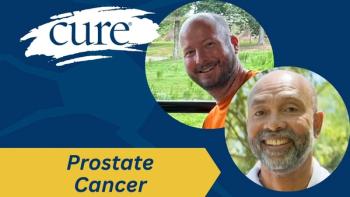
Cancer and Friendship
A retired oncology social worker offers several tips on supporting a friend who has cancer, as well as ways to ask for support as a patient with cancer.
Cancer is not a taboo subject. Yet some people treat it as so. At a time when close relationships are invaluable, some people struggle, wondering “What should I say? I don’t want to make them feel bad. I don’t know what to do.” Underneath these feelings may be fears related to mortality.
Such concerns may result in dodging the subject in conversation. Sadly, some may even avoid their friend altogether. As a result, a common sentiment among cancer survivors is that having cancer really tells you who your friends are.
Here are some suggestions to overcome this reluctance:
1. Don’t avoid visiting. Call your friend. Tell them you’d like to come visit. Ask when a good time would be.
2. Be a good listener. Pay attention to non-verbal cues such as eye-contact, facial expressions, gestures, appearance, volume, tone and speed of speech, mood and demeanor. Use those cues to guide your visit and discussion.
3. Use “I” messages. For example, express your thoughts and feelings like this: “I’m so glad we have a chance to talk,” or “I’m thankful we can be together,” or “This is very hard for me. I can only imagine what it’s like for you, please tell me about it,” or “I’m concerned about you,” or “I’d love to help. Tell me what you need.” “I” messages enhance communication and creates understanding.
4. Avoid questions. Of course you want to know all you can but imagine how many other people are asking, “How are you doing?” or “Are you okay?” or “How’s your treatment going?” Asking questions may result in very brief or one-word responses which stifles spontaneity. Open-ended statements help the dialogue flow. For example, “I’d love to hear how you are doing,” invites them to share what they want. Seeking clarification helps too, such as, “Tell me more, I want to understand.”
5. Use the power of touch. A soft hand on the arm or shoulder says, “I care about you. I’m here for you. I want to help.” Touch invites closeness.
6. Speak normally. Talk like you always do. When needed, a soft voice conveys care and concern. Loudness can be seen as controlling or insensitive. Rushing the conversation suggests impatience, even wanting to leave.
7. No distractions. Turn off the cell phone. No multi-tasking. Leave your life issues at the door. Be 100% focused on them.
8. Don’t be in a hurry. Plan your visit to stay as long as needed to listen, to help, to give support – to be a friend.
9. Follow through. If you commit to do something to help, do it. Failure to do so may be interpreted as being unreliable. Granted, things can change. If you can’t fulfill an obligation tell them why. Then reschedule it or get someone else to do it. Being dependable strengthens friendships.
10. Don’t visit just once. Tell them, “I’d love to come again. When would be a good time?” If appropriate, leave their home and do things together. Make being with them just like you would have done before their diagnosis. Nurture the relationship.
For the cancer survivor whose friend(s) haven’t called or visited:
1. Break the ice. Call your friend(s) and tell them you miss them, that you’ve been diagnosed with cancer and you want to tell them about it. Offer several suggested times that would be good for their visit.
2. Be candid. During their visit share your cancer experiences, your feelings and needs. Give them the opportunity to be the supportive and understanding friend you believe them to be.
3. Create a “to do” list. When they ask how they can help, show them the list. By doing so, they can choose for themselves and you won’t worry you’re asking too much.
4. Thank them. Tell them how much they mean to you and invite them back.
Having been diagnosed with cancer intensifies the need for caring, loving friendships. Make the effort, it’s worth it! Having the support of friends and family makes the journey so much easier.
For more news on cancer updates, research and education, don’t forget to




